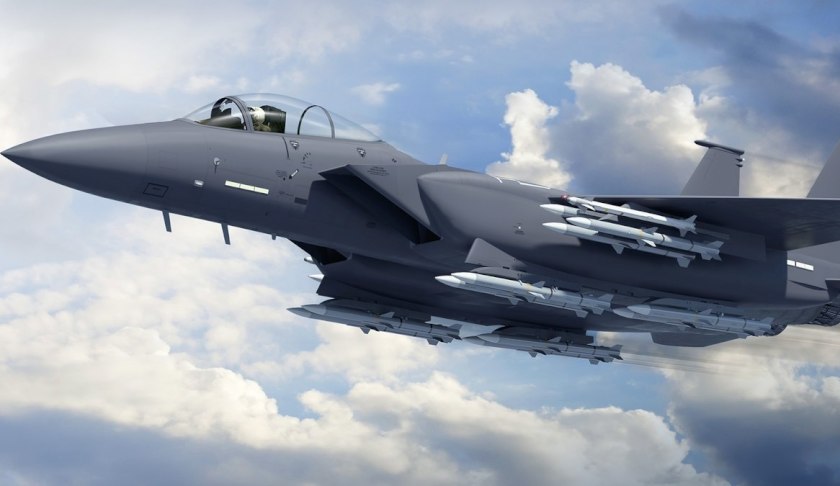The Pentagon has announced plans for a US$1.2 billion purchase of 12 upgraded Boeing F-15X fighter aircraft as part of the 2020FY budget request to support the US Air Force’s fleet of legacy and fifth-generation fighters.
As part of the planned recapitalisation and modernisation program of the US Air Force's (USAF) legacy fighter fleet and to supplement the growing fleet of fifth-generation F-22 and F-35 series aircraft, the Pentagon has announced the planned purchase of 12 advanced Boeing F-15X aircraft.
If approved by the Pentagon and the USAF, it would mark the first F-15 purchase by the service since 2001 when it procured additional F-15E Strike Eagle variants.
The F-15X was developed following an Air Force inquiry into both Boeing and Lockheed Martin regarding the introduction of a new air combat platform that was capable of "seamlessly plug[ing] into their existing air combat infrastructure as part of better-defined high-low capability mix strategy".
Developed as an evolution of the 45-year-old F-15 design, the F-15X provides a number of key capability and technology improvements over the legacy, fourth-generation F-15 platform, including:
- Flat-panel glass cockpits supporting fly-by-wire controls;
- Digital Joint Helmet Mounted Cueing System II helmet mounted display (HMD);
- Revised internal wing structure;
- Upgraded APG-82 active electronically scanned array (AESA) radar systems;
- Low-profile head-up display systems;
- Upgraded radio and satellite communications;
- The Eagle Passive Active Warning Survivability System (EPAWSS) electronic warfare and electronic surveillance suite; and
- Legion pod-mounted infrared search and track (ISRT) system.
These additions, particularly the enhanced wing structure enable the integration of Boeing's new AMBER missile carrying racks, enabling the F-15X to carry 22 air-to-air missiles during a single sortie. Alternatively, the AMBER racks would enable the F-15X to carry eight air-to-air missiles and 28 Small Diameter Bombs (SDBs), or up to seven 2,000-pound bombs and eight air-to-air missiles.
In contrast, the legacy F-15C/D platform can carry eight air-to-air missiles currently, while the specialised F-15SA manufactured for Saudi Arabia is capable of carrying a dozen such missiles.
This weapons carrying capability enhances the USAF's air combat capability by integrating into the broader force structure, filling niche roles supporting fifth-generation, low observable platforms like the F-22 and F-35, which can leverage their key fifth-generation force multipliers, including low observability shaping and materials, high-performance air frames, sensor fusion and network-centric capabilities as part of a renewed push for 'distributed lethality'.
In particular, the large air-to-air weapons payload of the F-15X can support F-22 and F-35 platforms operating in stealth configuration, thus limiting their payloads by serving as a long-range, stand-off 'shooting solution' for battlefield commanders, leveraging the key capabilities of both platforms operating in an enhanced, yet traditional 'high-low' capability mix.
This capability model, established during the Cold War, serves as a potent force structure model for Australia as the nation continues to integrate its own fleet of fifth-generation, F-35A Joint Strike Fighters while also operating fourth and 4.5 generation platforms like the legacy Hornet, Super Hornet and Growler platforms.








